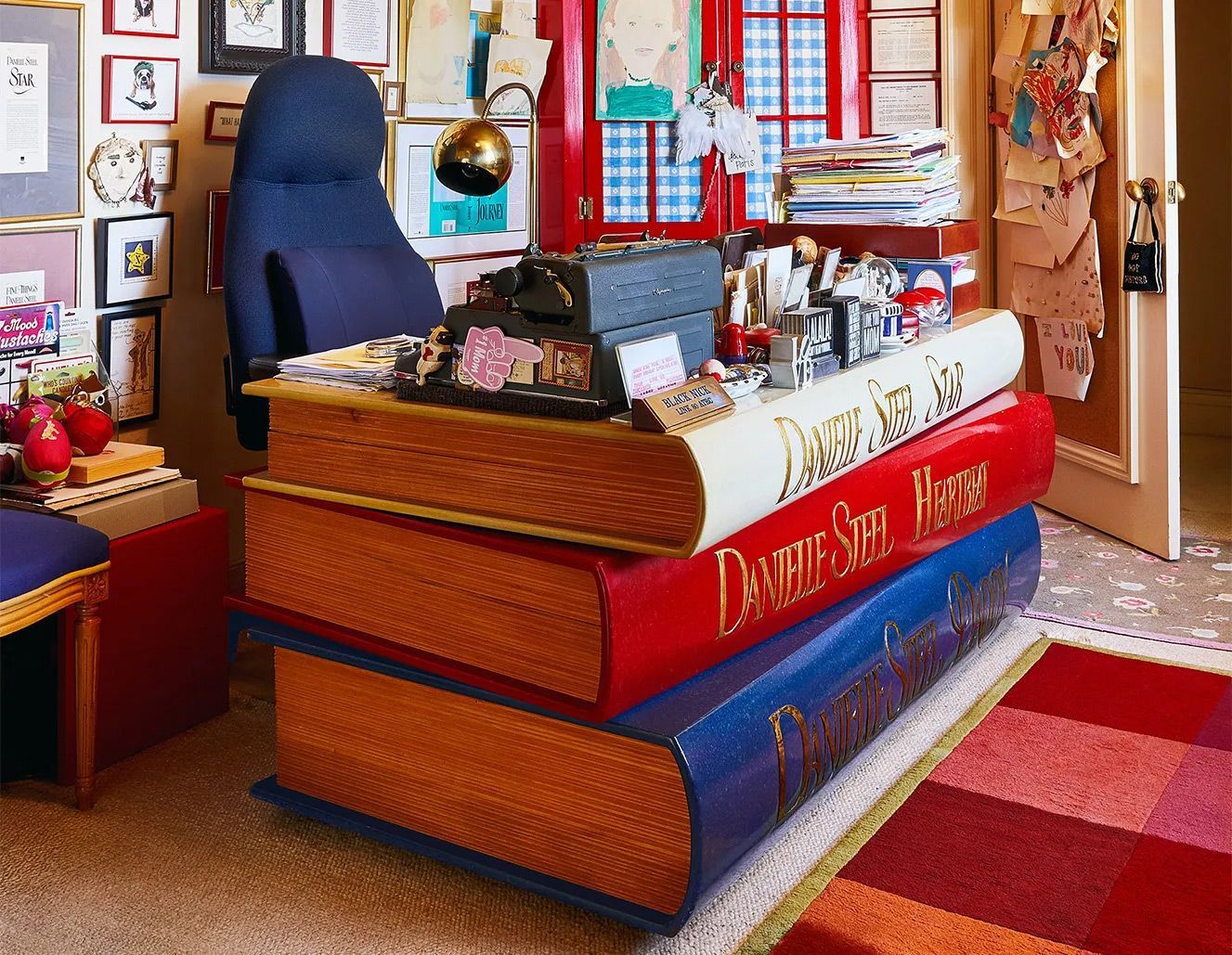Where writers write: photos of famous writers’ writing rooms
Six rooms we wish we could write in (and one we definitely don’t).
Image: A writing shack. But whose?
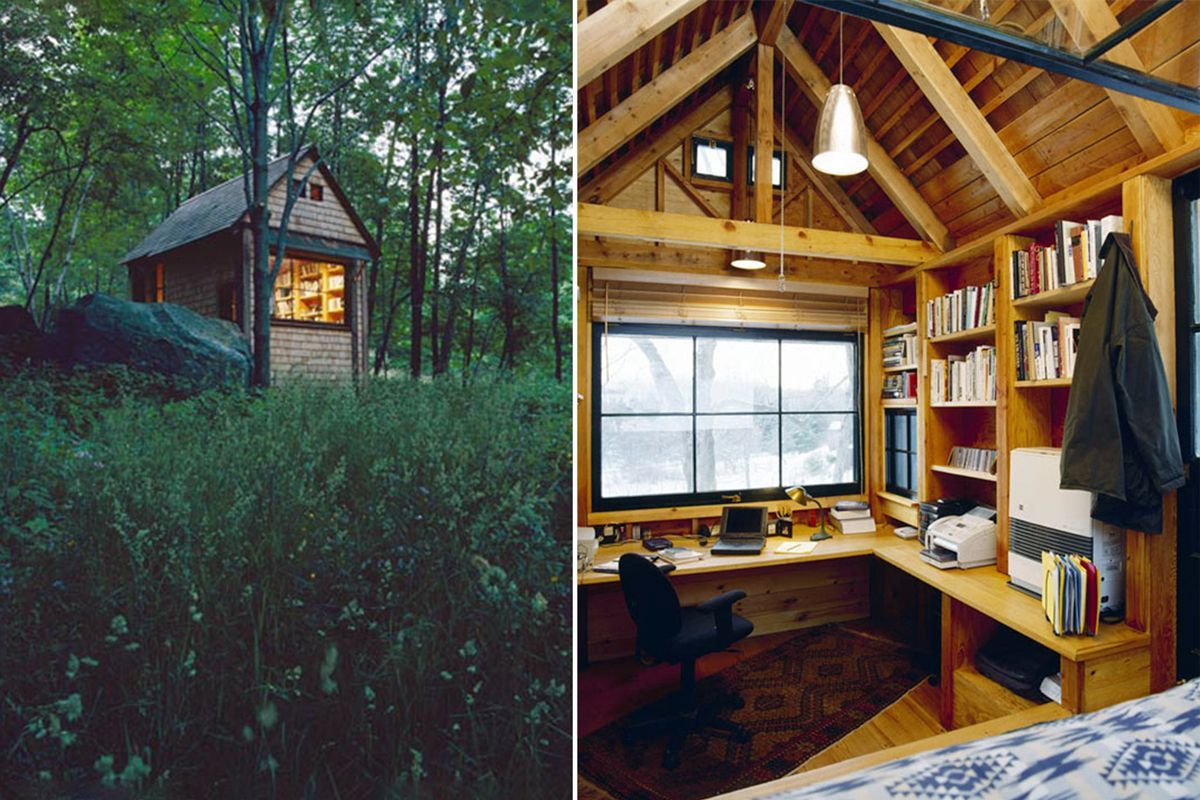
Image: a famous writer's writing shack. But whose?
Stephen King wrote Carrie on a child’s desk in a trailer laundry room. He graduated to an oak slab in a spacious, skylighted study after he sold the manuscript. But while the new digs may have felt like an upgrade, King found they brought out his worst tendencies. “For six years I sat behind that desk either drunk or wrecked out of my mind,” he confessed in On Writing: A Memoir of the Craft, “like a ship’s captain in charge of a voyage to nowhere.”
Eventually, King sobered up and returned to a more humble arrangement: a small desk placed in the corner of a modest-sized room. He recommends others do the same: “Every time you sit down there to write, remind yourself why [the desk] isn’t in the middle of the room. Life isn’t a support system for art. It’s the other way around.”
Clearly, not all writers have shared King’s beliefs about work-life balance. Nor, it would seem, his austere approach to interior design. As the following photos attest, many imbue the rooms in which they write with an aesthetic style that can only be described as ‘writerly’. Some are ornately decorated, maximalist in their declaration of what transpires within their walls; others take a more modest route: a computer on a desk in a shed (that just happens to overlook a picturesque snowscape).
Those who haven’t topped The New York Times Best Seller list may have to settle for more modest arrangements. (This article was drafted on a dining table overlooking a full sink of dishes). But here’s a little inspiration, sourced from various corners of the internet, should you feel like embarking on a little home renovation project.
Michael Pollan
Before he wrote How to Change Your Mind, a real-life account of taking psychedelics in your 60s, Michael Pollan wrote A Place of My Own: The Architecture of Daydreams. In it, the American food writer and journalist recounts the story of building a tiny writing hut in the woods behind his Connecticut house. The book neglected to include any photos of the hut in question, to the chagrin of some of Pollan’s readers. Perhaps sensing the shortcoming, he later uploaded the below images to his website. We’re not sure if they’re worth a thousand words, but they’re definitely nice. About a hundred should do it.
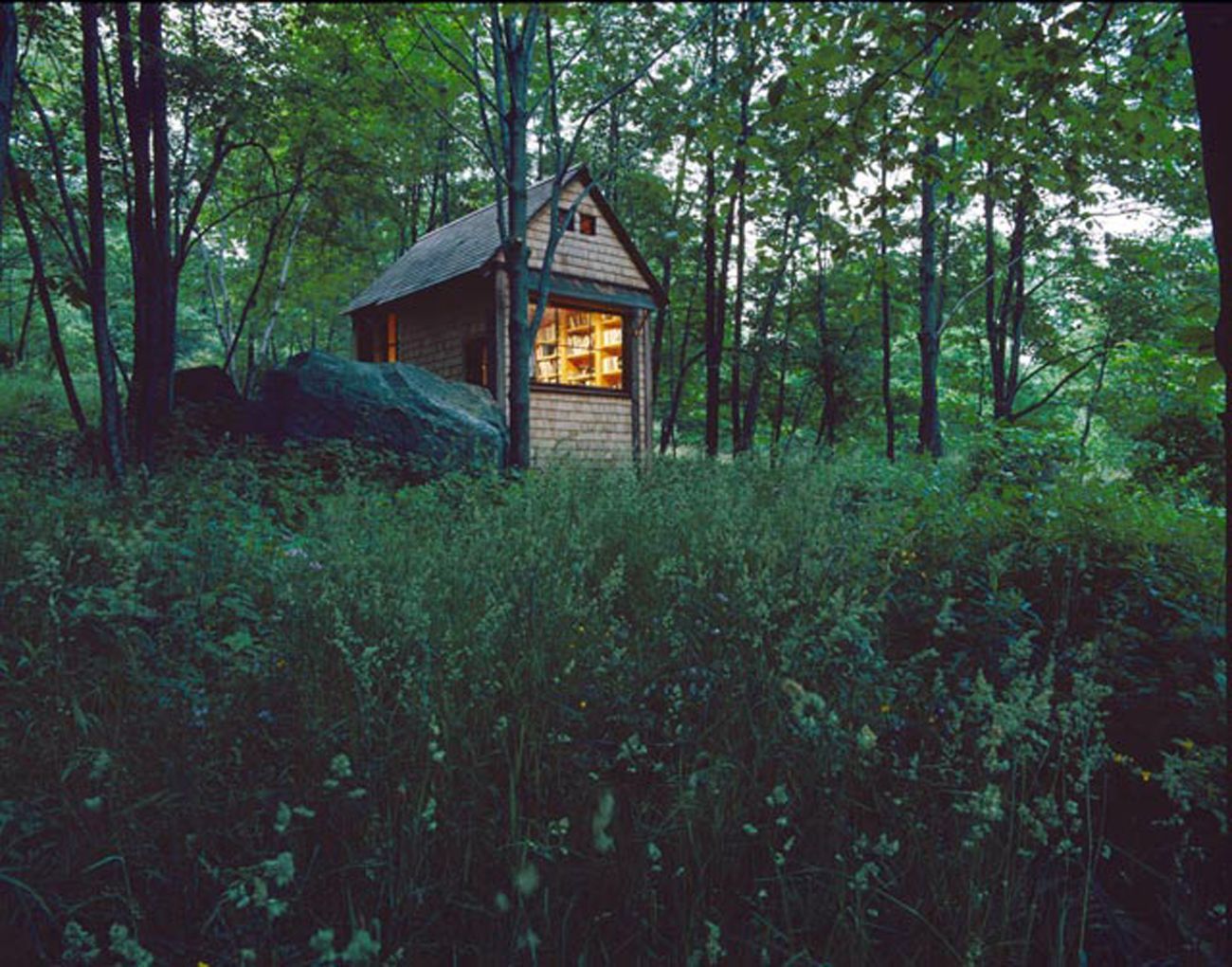
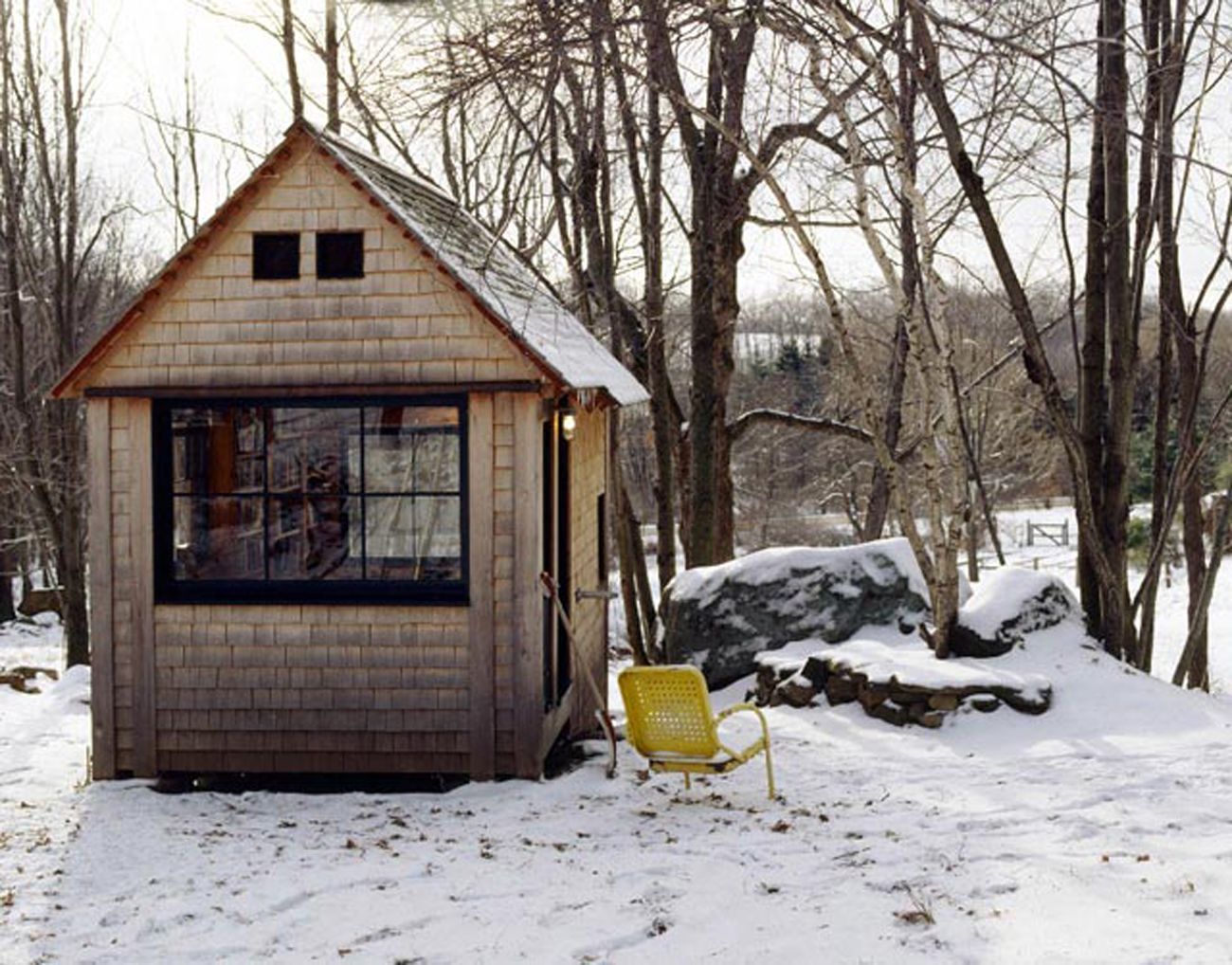
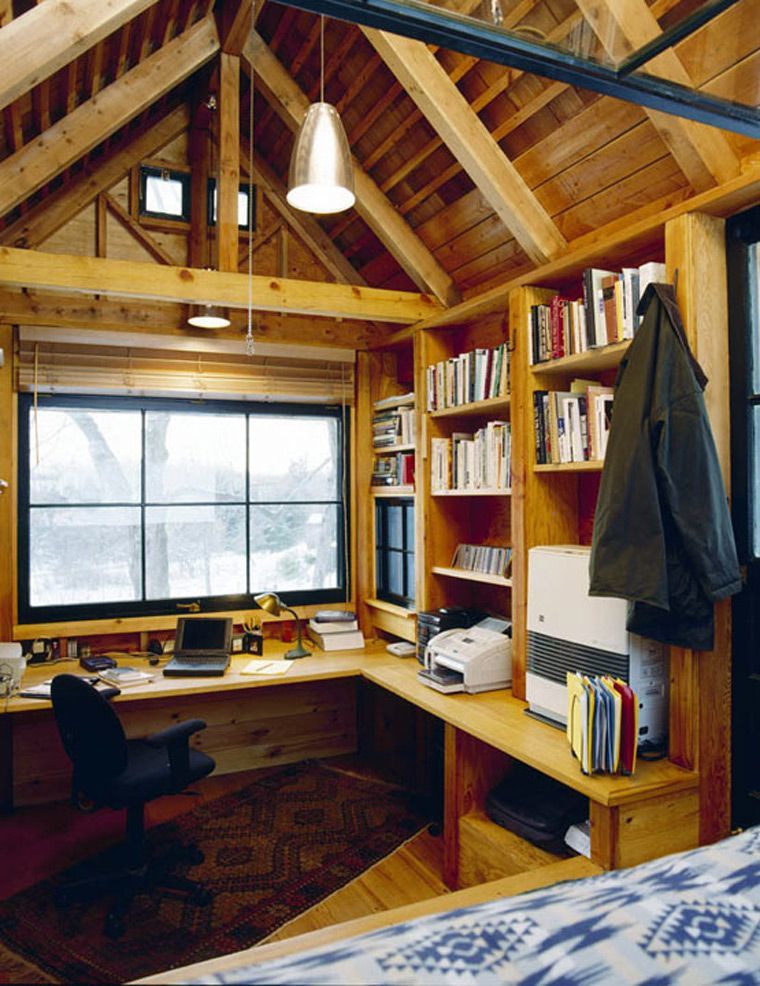
Neil Gaiman
Following in Pollan’s modest-but-quietly-charming steps is Neil Gaiman. The Sandman and American Gods author had his writing gazebo built in his backyard in the ’90s, and goes through phases of using it. “I’ll abandon it for 5 years, then rediscover it with delight,” he says in the architecture book Shedworking. “Nothing ever happens down there. I can look out of the window and some wildlife will occasionally look back, but mostly it's just trees, and they are only so interesting for so long, so I get back to writing, very happily.”
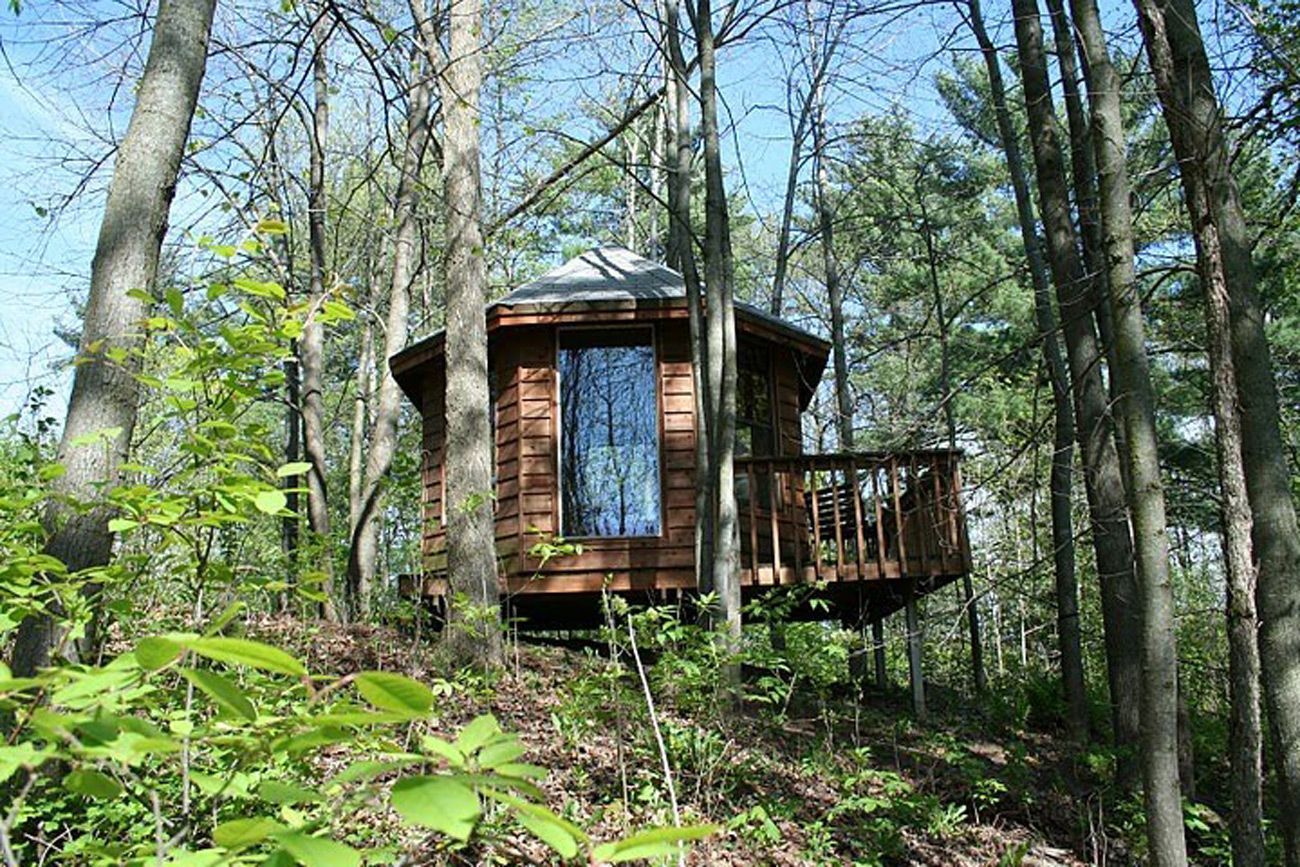
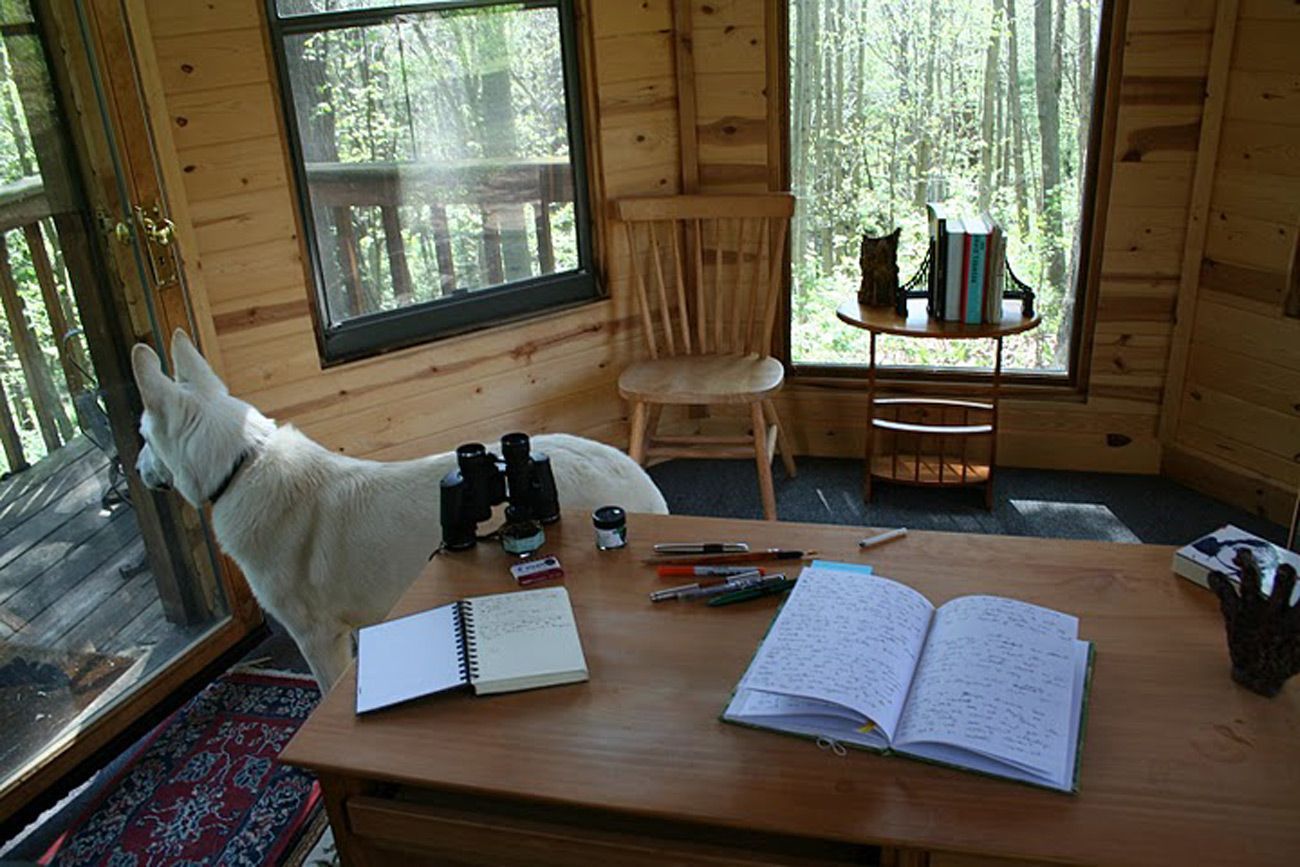
Joan Didion
It’s not the most revealing photo, focusing as it does on Joan Didion and her husband John Gregory Dunne as they work on a script in what looks like the living room of one of their California residences. But when given the opportunity to include Joan Didion in a piece of writing—even one as insubstantial as an interior design listicle—you take it. Especially if you’re struggling to find photos of female writers’ writing rooms. Trust me, I looked.
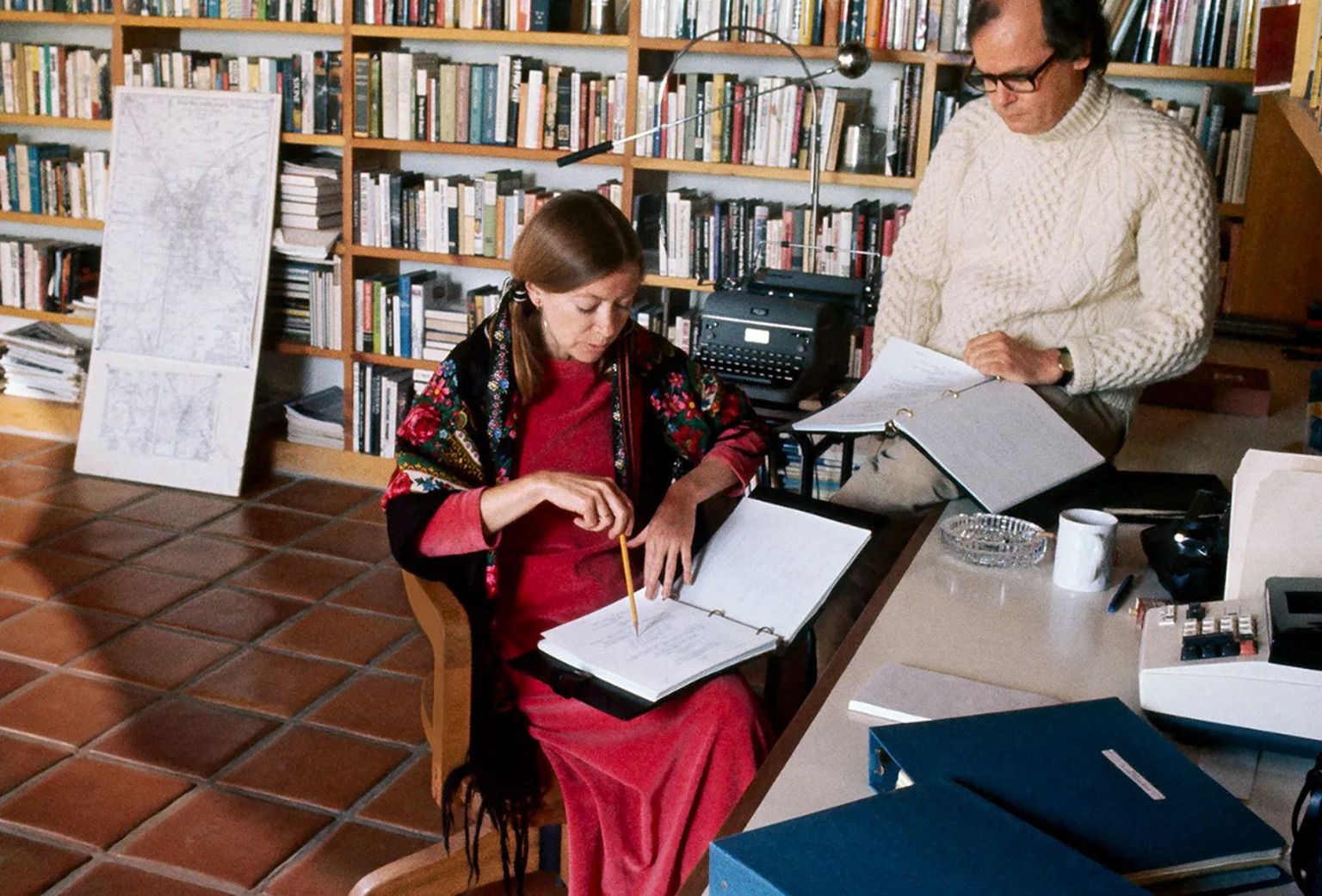
Will Self
Based on his office setup, you could be forgiven for thinking Will Self moonlights as an amateur detective. The Man Booker Prize-nominated author clearly has a thing for Post-it notes, which he uses to keep track of his dense, James Joyce-ian prose, and maps, which he uses to keep track of the geography his charters traverse.
As Self tells The Guardian, “I should imagine my writing room is very much as anyone would have envisaged it—if they could’ve been arsed: the wheel-scoured floorboards, the scaled-up desk, the council block through the greasy windowpane, the London map stapled to the blind.”
“I can’t throw anything away,” Self continues. “Anything. I’m going to end up like one of those old weirdos who lives in a network of tunnels burrowed through trash—yet I do not fear this.”
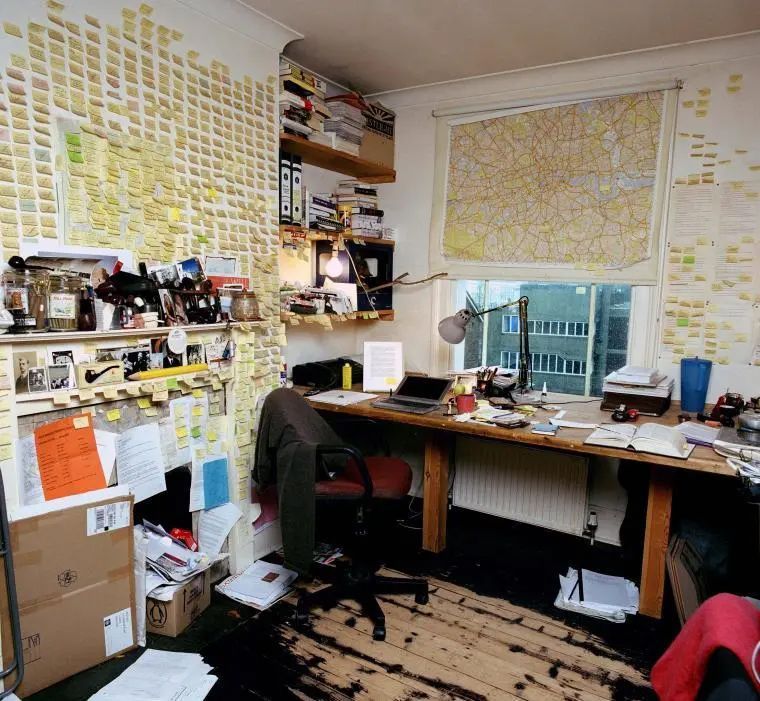
Roald Dahl
Legendary children’s author (and noted anti-Semite) Roald Dahl wrote his most famous books in a Buckinghamshire shed he affectionately called the Gipsy House. “The whole of the inside was organised as a place for writing,” recalled Quentin Blake, who illustrated dozens of Dahl’s books, “as he didn’t want to move from his chair everything was within reach. He wrote on yellow legal paper with his favourite kind of pencils.”
“I didn't go into the shed very often, because the whole point of it as far as Roald was concerned was that it was private, a sanctuary where he could work where no one interrupted him.”
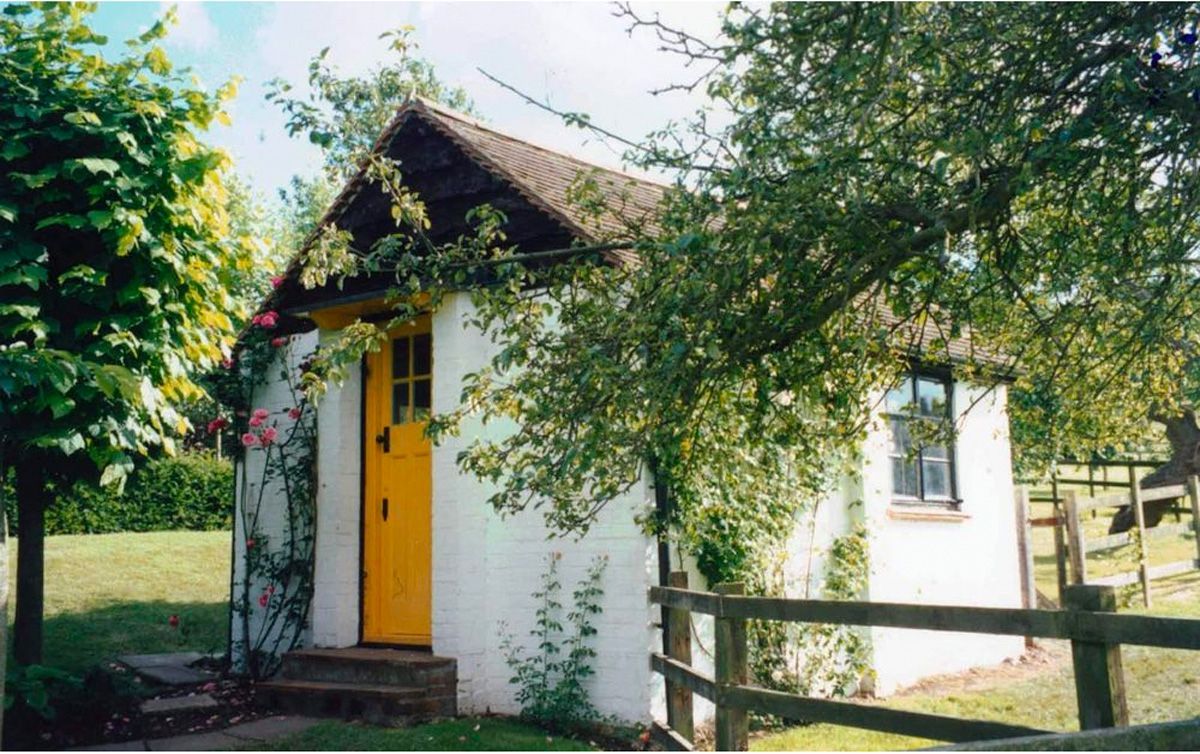
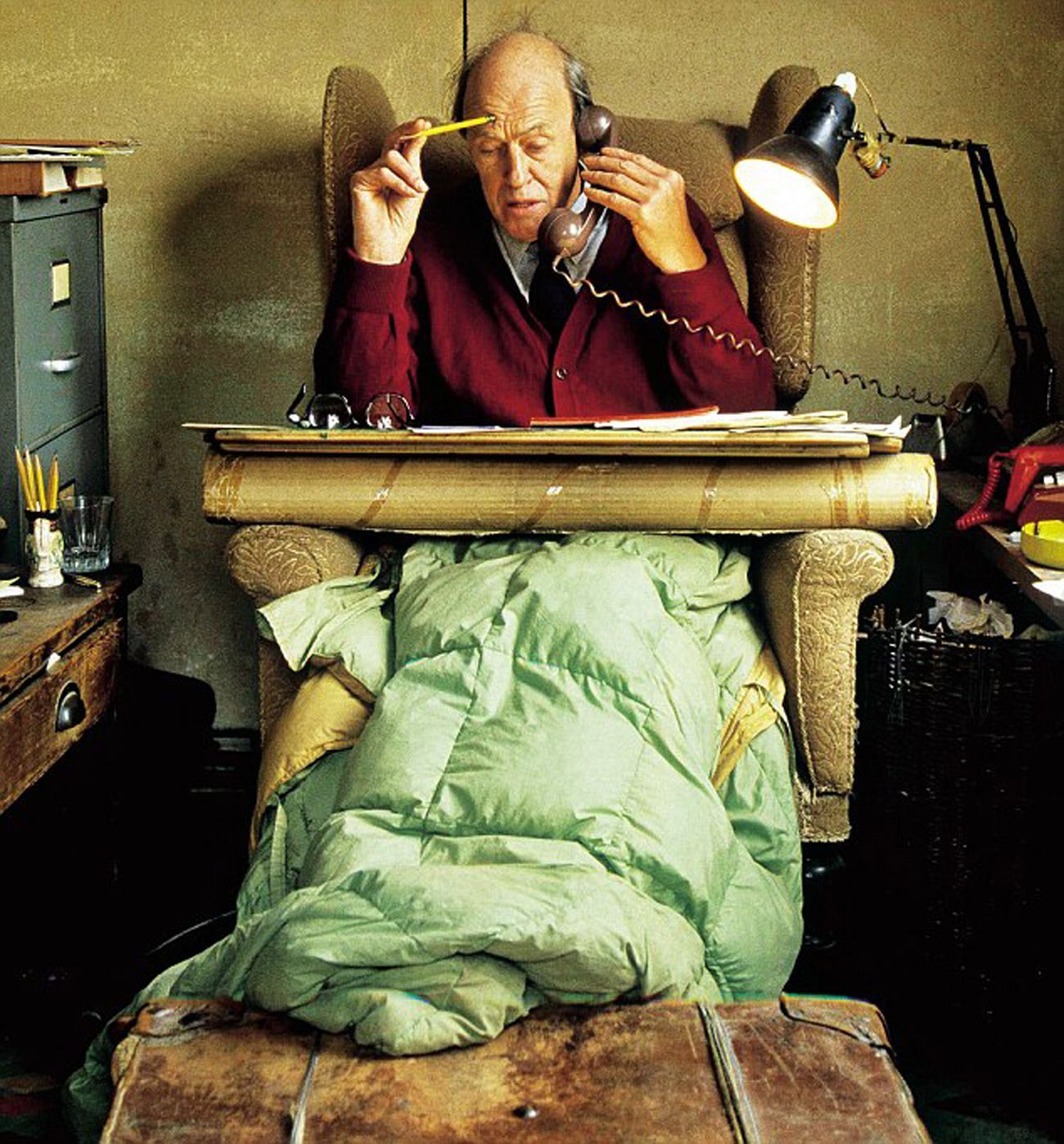
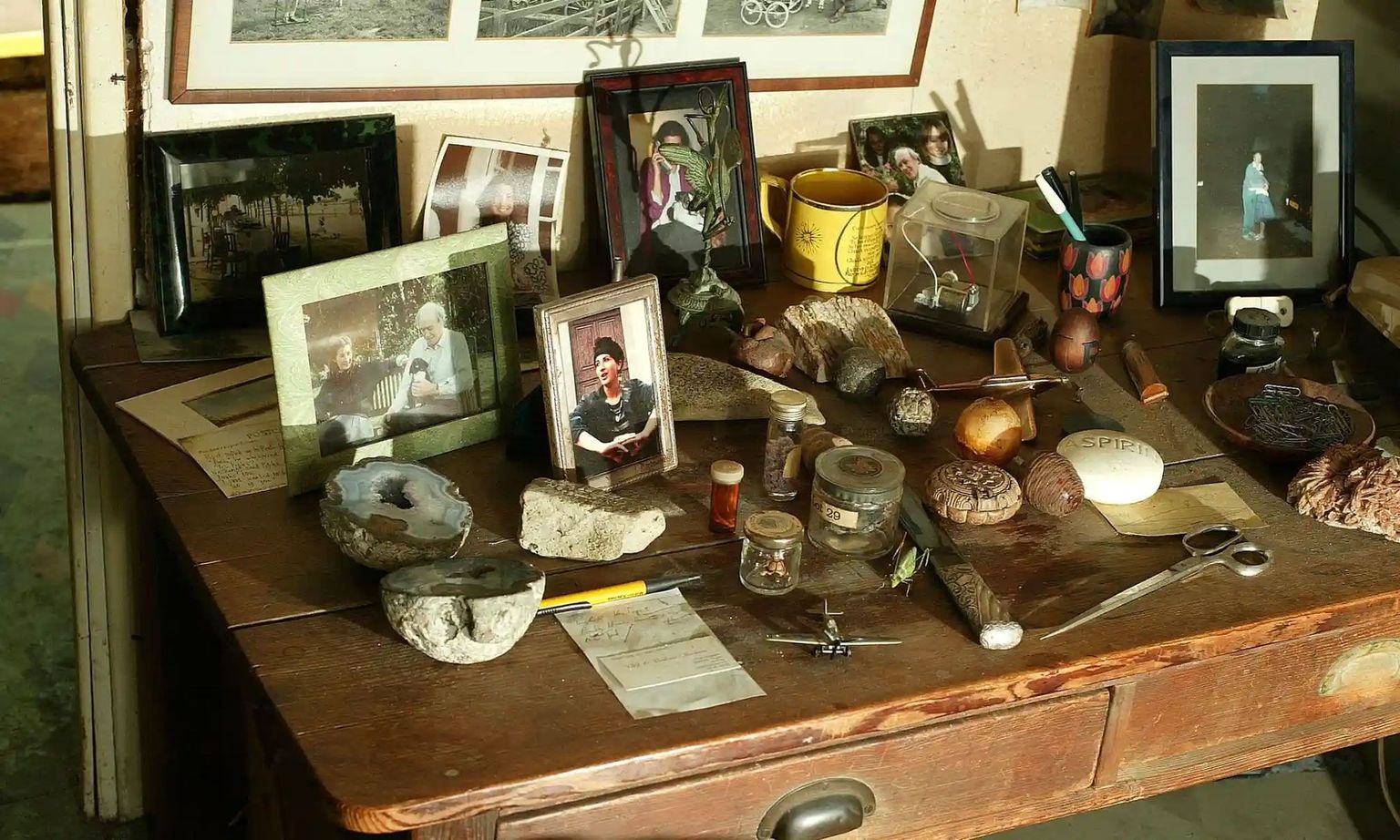
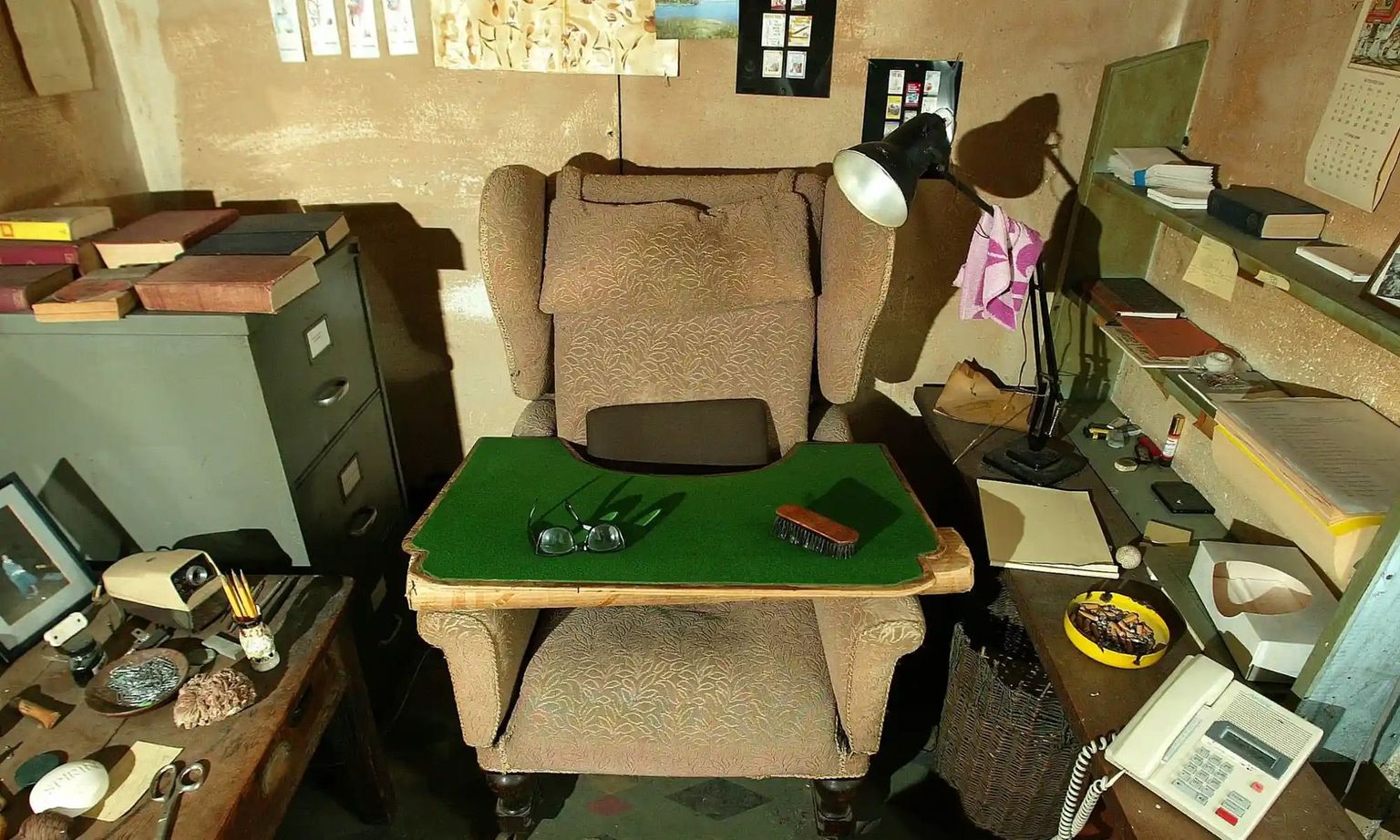
Photo: David Sillitoe
Philip Pullman
Pullman wrote the entire His Dark Materials trilogy in this shed in Oxford, which he had built shortly after his son started playing the violin. ‘I have my little superstitions,” he told the BBC. “One of them [is to] let the cobwebs grow while I’m writing the book and I tidy it up afterwards.” That must take some work: Pullman writes three pages a day—no more, no less—and only wraps things up at around the 1300-page mark.
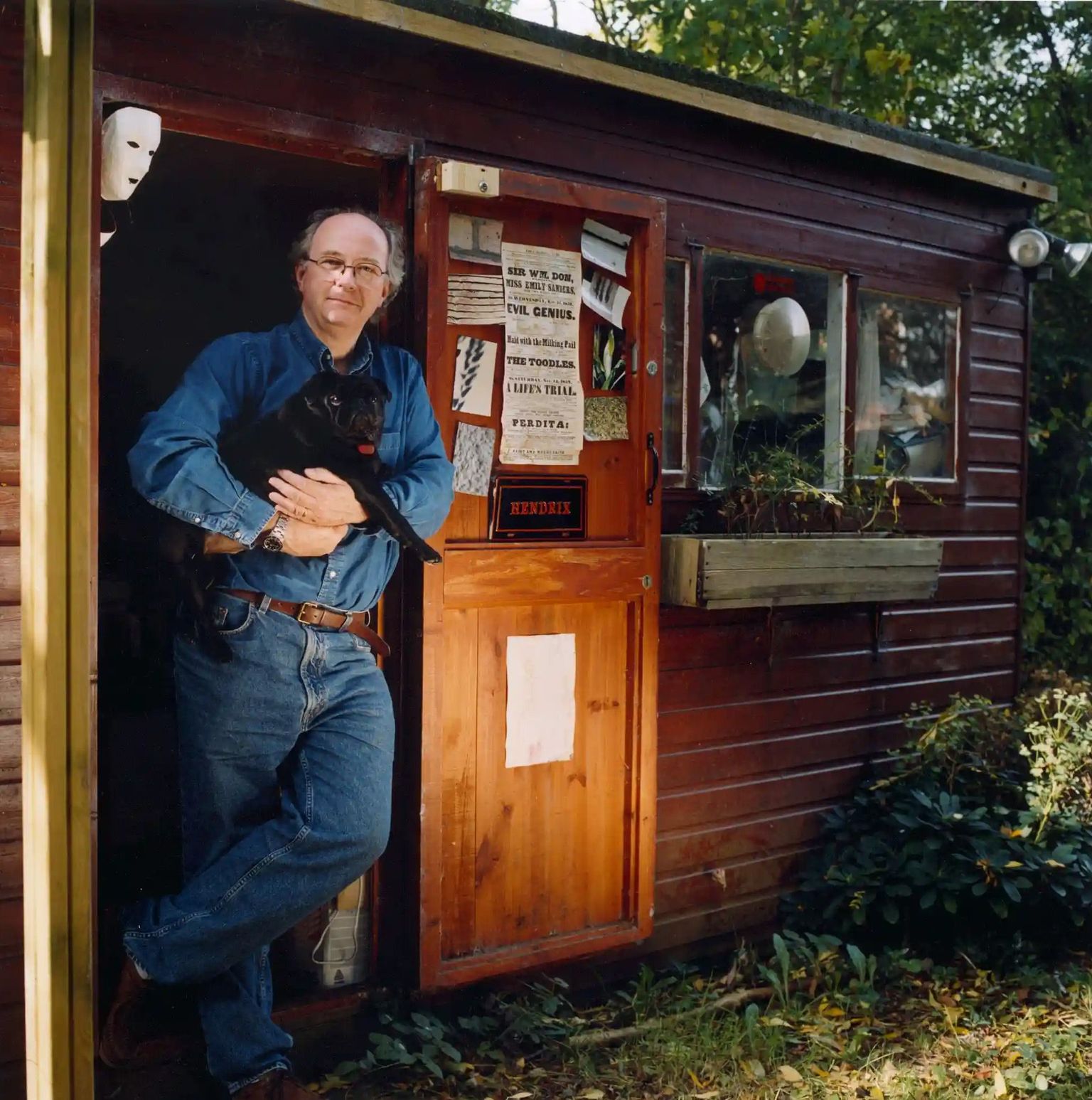
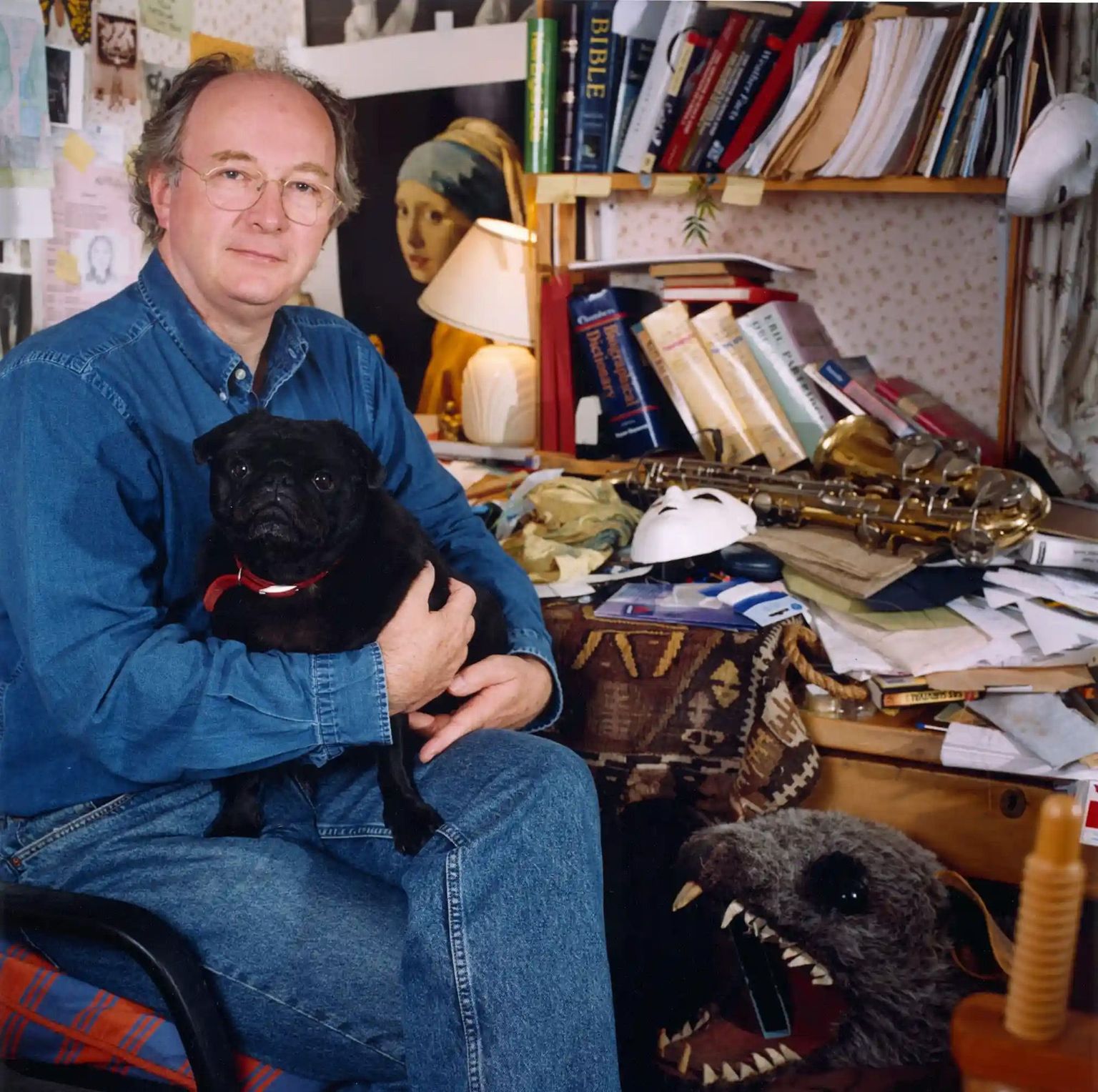
Photo: Eamonn McCabe
Danielle Steel
Danielle Steel may be the only author to have published more books than Stephen King (190 and counting, all of them bestsellers), so we’re going to forgive her for doing the polar opposite of what King recommends: glorifying the artifice of writing to an almost religious degree. “I had my desk made by some artisans about 25 years ago,” she told Vanity Fair of her Johnson and Friends-esque furniture. “They chose the colors and book titles—I love it.” Whatever gets the juices flowing, I guess.
